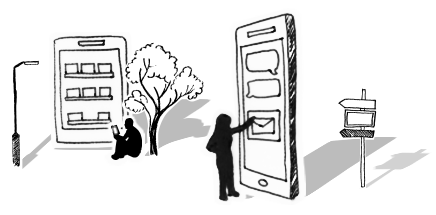




Social Learning: ‘A Course Without an End’
In my previous blog I talked about Social Learning and knowledge-sharing as a facet of an organisations culture and identity; something that needs to be promoted and encouraged throughout the organisational hierarchy.
In the learning industry our role ‘outside the classroom’ is evolving.
As a learning practitioner, it is easy for me to see the benefits of Social Learning. The majority of learning is done outside of the classroom / the eLearning module / the coaching session when a learner is working problems through on-the-job and practically applying learning (70/20/10).
Social Learning is about learners taking back control: learning is now about interaction and autonomy.
Effective learners are those that feel more empowered to take control of their learning, whether they are looking for skill change or performance support. They are realising they can find answers for themselves rather than waiting for something to happen. It is our job to provide an interactive knowledge-bank for learners to dip into when they need to… so how do we do this?
Make learning memorable: firstly our agenda should be focussed on learning that is short, sharp and relevant to our audience…but also learning needs to be memorable. Utilising different devices of conveying learning such as podcasts, vodcasts, how-to videos (the success of YouTube as a learning platform is remarkable!) and gamified content can all create a buzz in your community and get people talking…which is exactly what social learning is about!
Make learning sustainable (cultivate your social garden): social learning communities need to, especially in their infancy, be cared for; negative or incorrect content needs to be moderated and modified, valuable content needs to be encouraged and rewarded. This task falls at the feet of the learning community within an organisation.
It is our task to curate and administrate our social learning forums, theming content, ensuring content is up-to-date and relevant.
Social learning relies heavily on user-driven content and discussions. Our promotion and encouragement of users, as well as leading our community with examples of the correct types of content and behaviour will be a huge success factor in making a self-sustaining social learning network.
Market your learning: campaigns to remind and endorse learning and change can accelerate adoption within our communities. Combining strong internal communications and learning expertise can bring clarity and consistency in promoting an open, transparent, knowledge-sharing culture within your organisation, which is the bedrock of social learning.
The speed and complexity of the business world means that our employees often face cognitive overload and whilst we don’t want to add to this in any way with clever, memorable (!) campaigns, we can provide motivation to change behaviours and create talking points.
Utilise existing communities: since the boom of social media organisations have been trying to force a crossover into the corporate world. Companies attempting (with varied success) to utilise tools such as Yammer and Basecamp have often hit stumbling blocks with employee-endorsement…I have often heard the exclamation ‘what on earth is Yammer?’ from colleagues and clients alike.
What organisations have often failed to see the benefit of is piggybacking already well-established forums of social media. As learning practitioners we need to think creatively about how we can tap into thriving social communities and shift the mindset (of some of our organisations) away from the ‘dangers’ of YouTube and Twitter etc. and look at some of the opportunities they present – familiar tools for people to find easy ways to engage.
Analytics to prove success: ‘views’, ‘hits’, ‘likes’ and comment threads, are all visual ways of recording successes of social learning but what about the ‘lurkers’… the people within your network who are viewing content but not interacting within the community..? This is the fascinating thing about social media; for all the outwardly confident / outspoken users, there are 10 times (or likely more) that sit in the background watching everything unfold.
Admittedly I have been a lurker. In fact, I would wager that all users of social media have at some point, browsed comments or conversations without putting in their thoughts. So do these users gain the same benefits of the content? Of course they do.
It is in our interest to capture this fact using analytic tools, like market-leader Google Analytics, as proof to our senior leaders of the success of our networks. By extension the challenge for learning practitioners is to bring this ‘read only’, anonymous community into the interactive space and find out their thoughts and feelings… (now there is a thought… anonymous commenting?)
Social learning or learning ‘beyond the formal course’ has always been there but how can we bring it to the forefront of our organisations? Have you thought about a company Wiki? Or utilising Google Analytics? What are your success stories of memorable and effective internal learning campaigns? Have you utilised an internal or external social forum to seed changes in behaviour?
To get the latest change tips, advice and guidance directly to your inbox, sign up to our monthly Business Change Digest.
